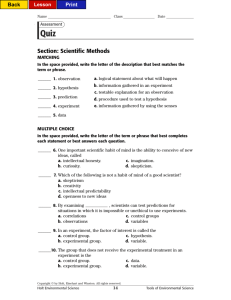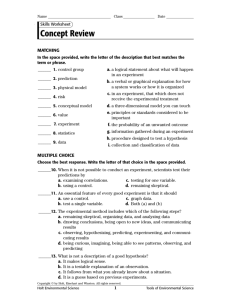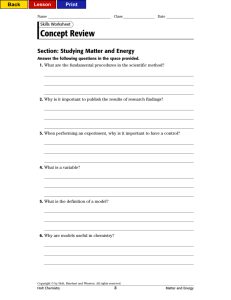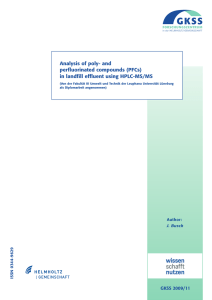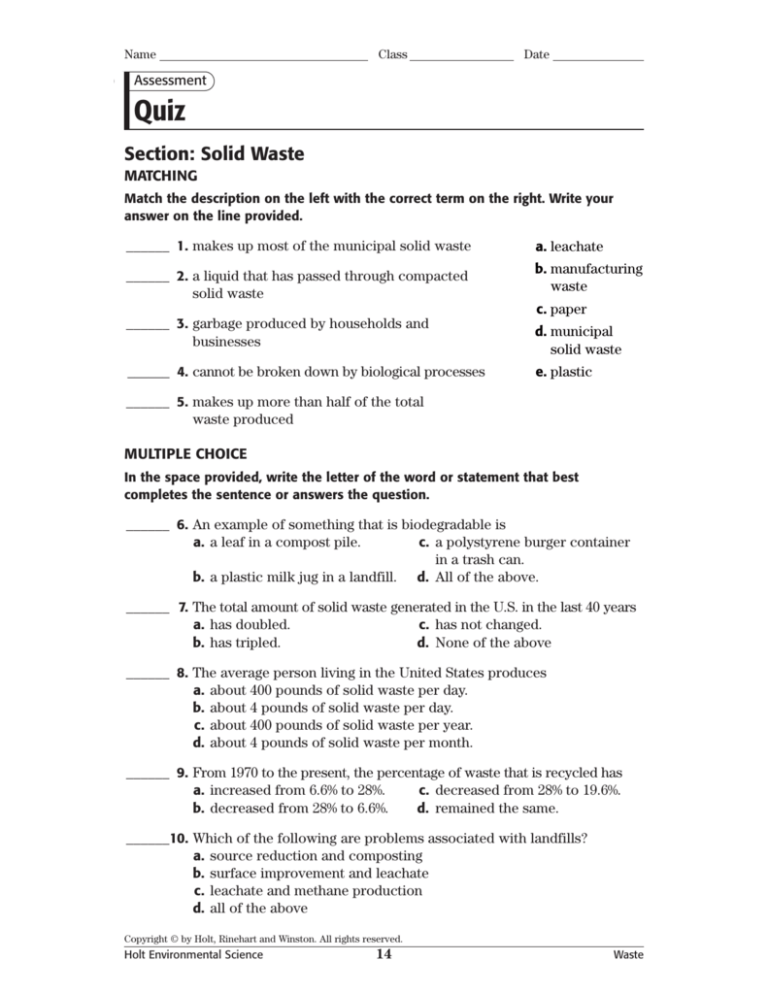
Name
Class
Date
Assessment
Quiz
Section: Solid Waste
MATCHING
Match the description on the left with the correct term on the right. Write your
answer on the line provided.
______ 1. makes up most of the municipal solid waste
______ 2. a liquid that has passed through compacted
solid waste
a. leachate
b. manufacturing
waste
c. paper
______ 3. garbage produced by households and
businesses
______ 4. cannot be broken down by biological processes
d. municipal
solid waste
e. plastic
______ 5. makes up more than half of the total
waste produced
MULTIPLE CHOICE
In the space provided, write the letter of the word or statement that best
completes the sentence or answers the question.
______ 6. An example of something that is biodegradable is
a. a leaf in a compost pile.
c. a polystyrene burger container
in a trash can.
b. a plastic milk jug in a landfill. d. All of the above.
______ 7. The total amount of solid waste generated in the U.S. in the last 40 years
a. has doubled.
c. has not changed.
b. has tripled.
d. None of the above
______ 8. The average person living in the United States produces
a. about 400 pounds of solid waste per day.
b. about 4 pounds of solid waste per day.
c. about 400 pounds of solid waste per year.
d. about 4 pounds of solid waste per month.
______ 9. From 1970 to the present, the percentage of waste that is recycled has
a. increased from 6.6% to 28%.
c. decreased from 28% to 19.6%.
b. decreased from 28% to 6.6%.
d. remained the same.
______10. Which of the following are problems associated with landfills?
a. source reduction and composting
b. surface improvement and leachate
c. leachate and methane production
d. all of the above
Copyright © by Holt, Rinehart and Winston. All rights reserved.
Holt Environmental Science
14
Waste
TEACHER RESOURCE PAGE
5.
6.
7.
8.
9.
10.
ulation than does the United States.
With less available space, people in
Japan are more inclined to take measures, such as recycling, that minimize
the amount of land needed for landfills. Japan also has cultural traditions
that encourage people to minimize the
amount of waste.
4
1
3
2
5
Incinerators require a great deal of
energy to operate. They also need
pollution-control devices.
11. They must be monitored so that harmful gases and particles are not released
into the air.
12. Radioactive wastes must sit undisturbed
for thousands of years before the
radioactivity decreases to safe levels.
Active Reading
SECTION: SOLID WASTE
1.
2.
3.
4.
5.
6.
7.
8.
9.
d
b
c
Biodegradable means capable of being
broken down by the action of living
things.
a
c
Consumers purchase products that
have been manufactured.
pesticides and fertilizers
Waste containing these products may
be harmful if returned to the soil.
Map Skills
1. 21
2. 35,714
3. Smaller communities located in the
western Bay area could ship recyclables
along Interstate 280 while those in the
eastern Bay area could use Interstate
880; increased fuel consumption and air
pollution from transportation; possible
overloading of urban recycling centers.
4. Answers may vary but should relate to
the facts that higher populations would
generate more waste and that urban
areas have very little room to expand
their landfills.
SECTION: REDUCING SOLID WASTE
1.
2.
3.
4.
5.
6.
7.
8.
9.
10.
11.
bottles, cans, and newspapers
d
c
collecting discarded materials and
sorting by type
cleaning materials and making them
ready to be used again
using the materials to make new
products
selling the new products to consumers
It is sorted by type and made into pulp
with water.
It is crushed.
They may be encouraged to build more
facilities to make recycled products.
It becomes easier for communities to
sell the materials they collect from
residents for recycling.
Quiz
SECTION: SOLID WASTE
Matching
1. c
2. a
3. d
4. e
5. b
SECTION: REDUCING SOLID WASTE
Matching
1. d
2. c
3. e
4. b
5. a
SECTION: HAZARDOUS WASTE
1.
2.
3.
4.
Multiple Choice
6. c
7. a
8. b
9. a
10. c
c
b
a
Hazardous waste is discarded material that is harmful to the environment
or to people.
Multiple Choice
6. a
7. b
8. c
9. c
10. b
Copyright © by Holt, Rinehart and Winston. All rights reserved.
Holt Environmental Science
90
Waste


